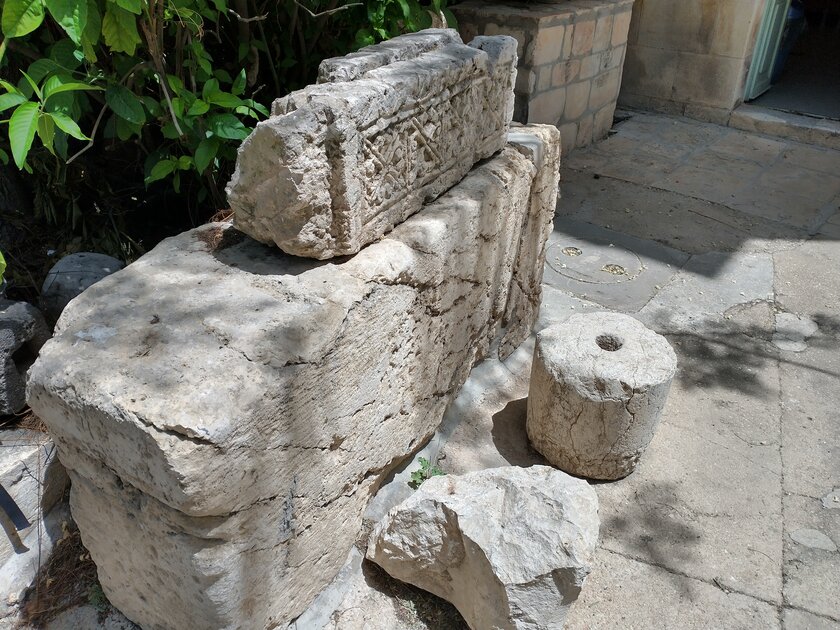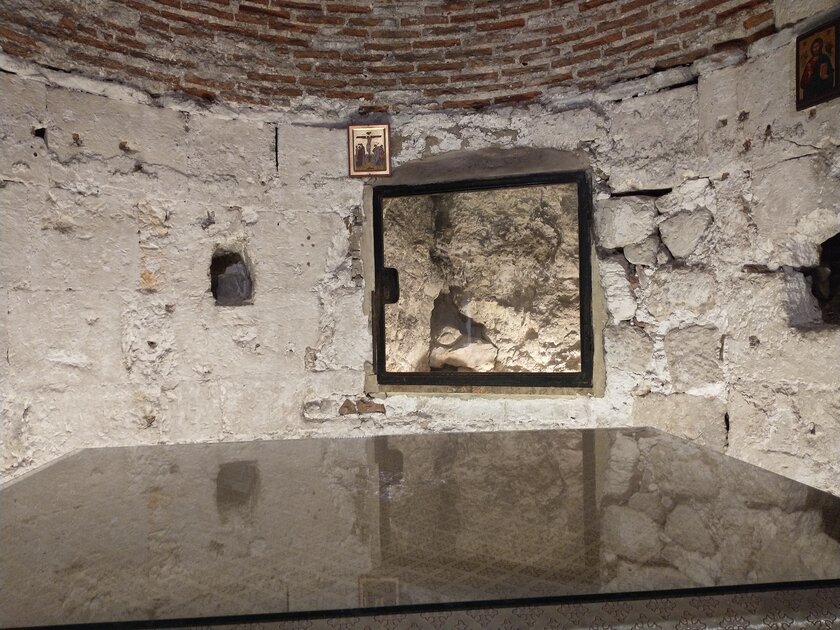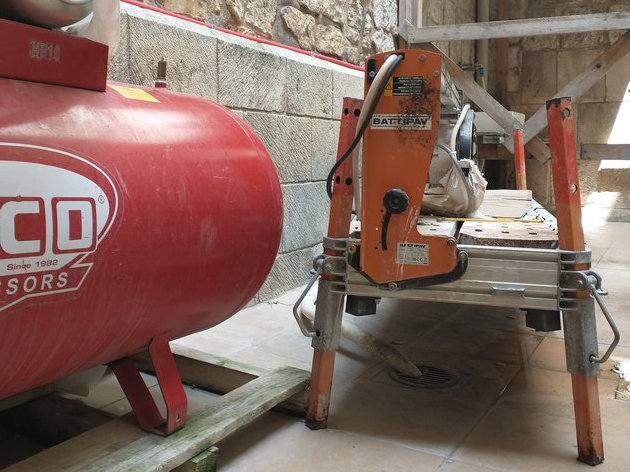The Stone Age Mentality of the Holy Sites
Every Christian we met in Palestine emphasized that we were walking in the footsteps of Jesus Christ. But it was hard to feel that way. Golgotha had been reduced to a cracked stone visible behind a window in the towering Church of the Holy Sepulchre. The Syrian Orthodox Church of St. Mark claims to be the location of the last supper; the space where that table was allegedly set is now several feet below ground.

I recall the holy sites of Jerusalem and Bethlehem as stones upon stones upon stones. St. Anne’s Church built on the ruins of Roman baths and cisterns. The Shepherd’s Church a cave within a cave below ground. The Church of the Holy Sepulchre built to envelop fragments of Cavalry, the Stone of Anointing, the Angel’s Stone, an omphalos.

I spent a lot of time sat in a chapel on the lower level of the Church of the Holy Sepulchre. The stone facade of one of the pillars was only partially restored. Earlier we had been welcomed by the Greek Orthodox Patriarch of Jerusalem, who emphasized his role in maintaining and protecting holy sites.
But like many church leaders, he spoke from a place of fantastic wealth. We were seated on plush, gilt chairs in a large and lavishly decorated chamber of a building near the Old City’s Jaffa Gate. All 300 of us offered a small serving of cognac. We were assured the orthodox church provides a singular sort of spiritual medicine and implored to feed the hungry by a man clearly commanding the resources to provide very real care and sustenance if only he would choose to.

The art and architecture of Christianity are impressive but I can hardly step into a church without recalling a line from the Gospel of Thomas:
Verse 77Split a piece of wood, and I am there. Lift up the stone, and you will find me there.
Standing in Jerusalem’s halls of religious power, it’s almost suspicious that these words had been relegated to apocrypha.

There’s a dissonance in the act of surrounding a cracked stone with monumental stone architecture. A contradiction in a building that protects a display of the fragility stone itself; one of the oldest material shorthand for permanence.
It brings to mind the Tao Te Ching, which offers an alternative symbol of strength; water.
Nothing in the world
is as soft and yielding as water.
Yet for dissolving the hard and inflexible,
nothing can surpass it.
Verse 78

If the holy sites have any permanence it does not arise from the stones themselves. The material is explicitly impermanent. The stones remain from their consistent renewing and re-renewal by the faithful over time.
Speaking with George Sa’adeh, he described the conflict in Palestine plainly as one over land. Not religion. Not ideology. Yes when someone in the holy land asserts their right to enclose an area they often argue from a theological basis. A convenient means to the ends of enclosure and enrichment. Claiming wealth for yourself at the expense of another, without guilt for displacing that other.
Are the borders and buildings worth the suffering their maintenance implies?
Are world religions truly so fragile, underpinned only by a handful of brittle structures?
Repeatedly during our pilgrimage the answer was given in a chant. The Kingdom of God is not a place to be enclosed in stone.
Communaute de TaizéThe Kingdom of God is justice and peace.
And joy in the Holy Spirit!